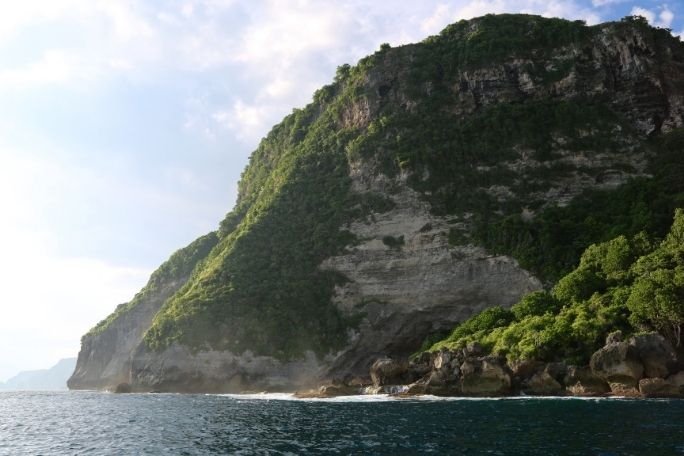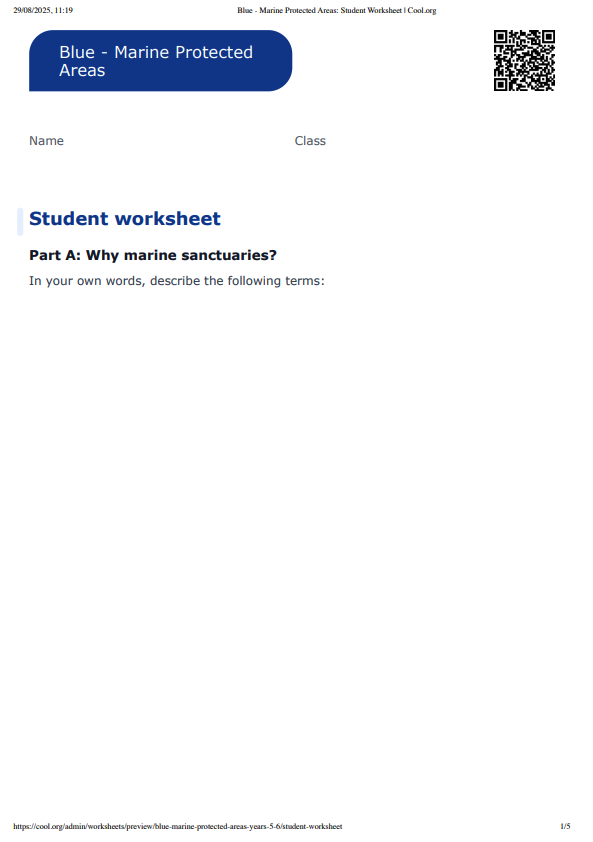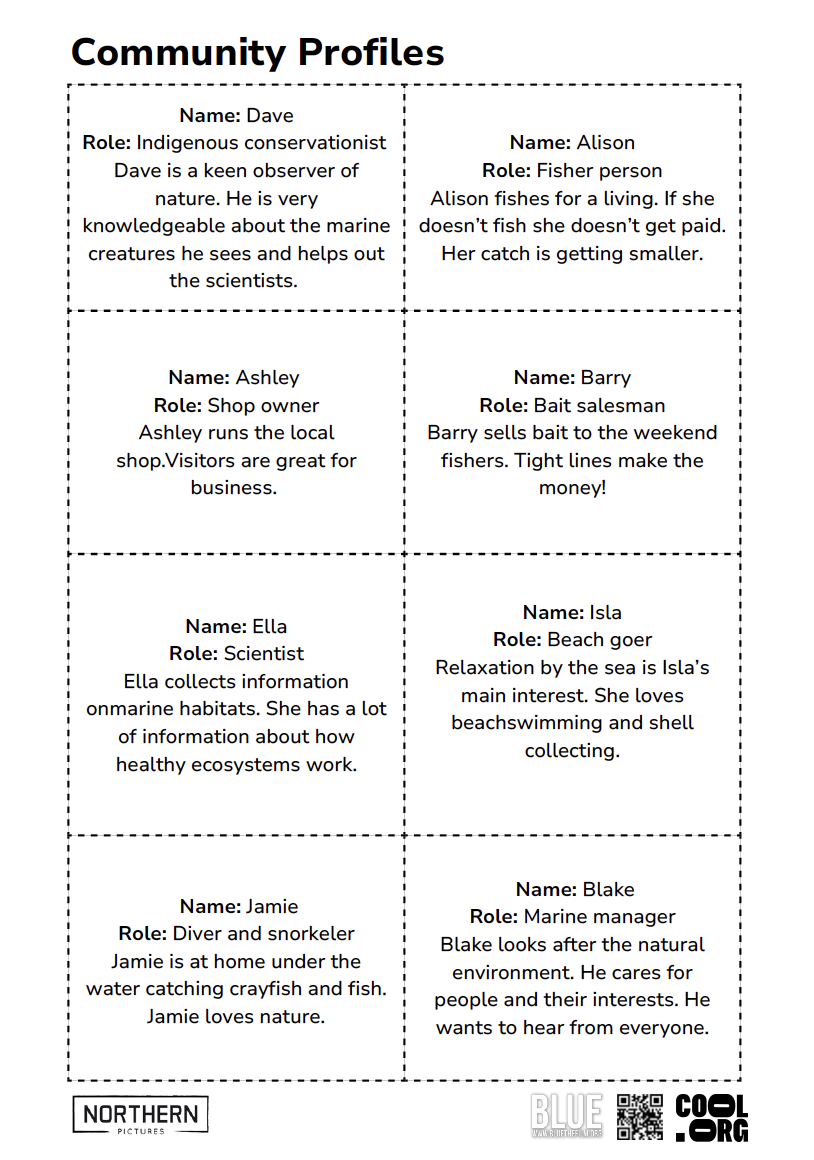Lesson summary
This lesson incorporates clips from Blue The Film as learning inspiration. Students investigate Australia’s Marine Reserve system. They begin by identifying the benefits of marine reserves and then look at where Australia’s Marine Reserves are found and the different levels of protection these reserves offer. Students then participate in a role play activity that explores community values relating to the formation of a marine sanctuary. Finally, students discuss how marine reserve systems are crucial in protecting marine biodiversity for the future.
Learning intentions:
Students will:
- understand the role of people and science in the creation of Australia’s marine protected areas
- recognise how marine protected areas help marine biodiversity now and in the future.
Success criteria:
Students can:
- understand how important the ocean is in supporting all life on Earth
- assess how change over time can be observed and can be used to help inform future decision-making
- participate in a role-play exercise.
Lesson guides and printables
Curriculum links
Select your curriculum from the options below.
Lesson details
Skills
This lesson is designed to build students’ competencies in the following skills:
- communication
- creativity
- collaboration
- critical thinking
- empathy
Curriculum Mapping
Australian Curriculum content descriptions:
Year 5 Science:
- Scientific knowledge is used to solve problems and inform personal and community decisions (ACSHE083)
Year 6 Science:
- Scientific knowledge is used to solve problems and inform personal and community decisions (ACSHE100)
Year 5 HASS:
- Examine different viewpoints on actions, events, issues and phenomena in the past and present (ACHASSI099)
Year 6 HASS:
- Examine different viewpoints on actions, events, issues and phenomena in the past and present (ACHASSI127)
Syllabus outcomes: ST3-7PW.
General capabilities: Critical and Creative Thinking
Cross-curriculum priority: Sustainability
Relevant parts of Year 5 Science achievement standards: Students discuss how scientific developments have affected people’s lives, help us solve problems and how science knowledge develops from many people’s contributions.
Relevant parts of Year 6 Science achievement standards: Students explain how scientific knowledge helps us to solve problems and inform decisions and identify historical and cultural contributions.
Relevant parts of Year 5 HASS achievement standards: Students describe different views on how to respond to an issue or challenge.
Relevant parts of Year 6 HASS achievement standards: Students identify different perspectives in the past and present.
Unit of work: Blue The Film: Inquiry – Years 5 & 6.
Time required: 60 mins.
Level of teacher scaffolding: Medium – oversee activities and lead discussions.
UN Sustainable Development Goals
- Target 14.1: By 2025, prevent and significantly reduce marine pollution of all kinds, in particular from land-based activities, including marine debris and nutrient pollution.
Resources Required
- Student Worksheet – one copy per student
- Device capable of presenting a website to the class
- Community Profiles
- WWF – Marine Protected Areas – Infographic
- Map of Australia’s Marine Reserves
Additional Info
Blue is a feature documentary film charting the drastic decline in the health of our oceans. With more than half of all marine life lost and the expansion of industrialisation of the seas, the film sets out the challenges we are facing and the opportunities for positive change. Blue changes the way we think about our liquid world and inspires the audience to action. Find out how to screen or download the film here. Along with the film is an ambitious global campaign to create advocacy and behaviour change through the #oceanguardian movement. To become an ocean guardian, see the website.
Related Professional Learning
How To Teach Sustainability With Hope
Quick summary: This course is for both primary and secondary teachers of all subjects, but especially for English, Science, Humanities and Geography teachers who are covering climate change and the cross-curriculum priority of sustainability.





Welcome back!
Don't have an account yet?
Log in with:
Create your free Cool.org account.
Many of our resources are free, with an option to upgrade to Cool+ for premium content.
Already have an account?
Sign up with:
By signing up you accept Cool.org's Terms and Conditions(Opens in new tab) and Privacy Policy(Opens in new tab).